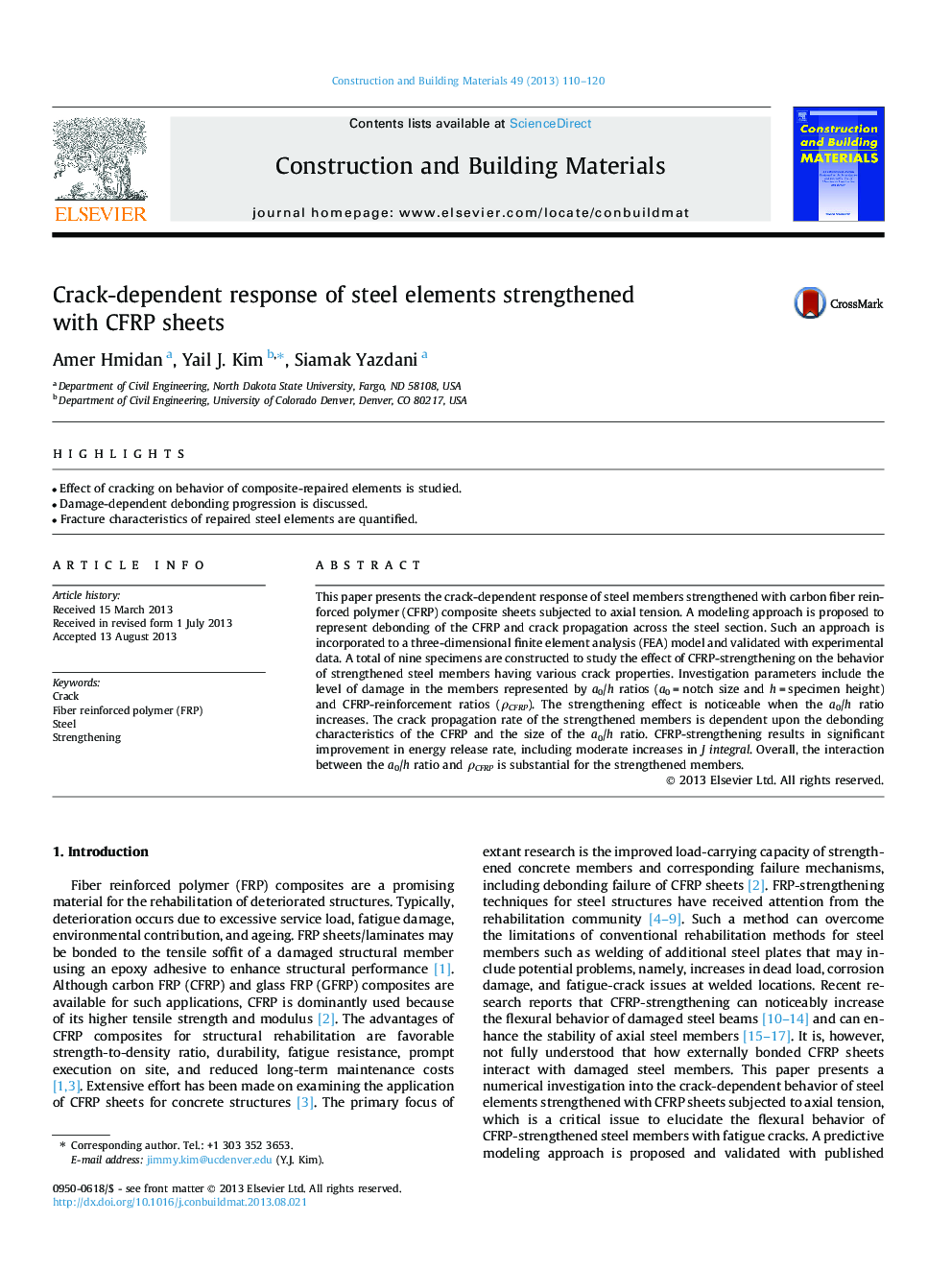| Article ID | Journal | Published Year | Pages | File Type |
|---|---|---|---|---|
| 6724710 | Construction and Building Materials | 2013 | 11 Pages |
Abstract
This paper presents the crack-dependent response of steel members strengthened with carbon fiber reinforced polymer (CFRP) composite sheets subjected to axial tension. A modeling approach is proposed to represent debonding of the CFRP and crack propagation across the steel section. Such an approach is incorporated to a three-dimensional finite element analysis (FEA) model and validated with experimental data. A total of nine specimens are constructed to study the effect of CFRP-strengthening on the behavior of strengthened steel members having various crack properties. Investigation parameters include the level of damage in the members represented by a0/h ratios (a0 = notch size and h = specimen height) and CFRP-reinforcement ratios (ÏCFRP). The strengthening effect is noticeable when the a0/h ratio increases. The crack propagation rate of the strengthened members is dependent upon the debonding characteristics of the CFRP and the size of the a0/h ratio. CFRP-strengthening results in significant improvement in energy release rate, including moderate increases in J integral. Overall, the interaction between the a0/h ratio and ÏCFRP is substantial for the strengthened members.
Related Topics
Physical Sciences and Engineering
Engineering
Civil and Structural Engineering
Authors
Amer Hmidan, Yail J. Kim, Siamak Yazdani,
